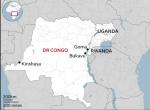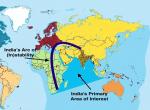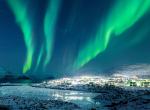Pakistan-US relations from 2017 provides an opportunity to understand the symbiotic relationship between these two countries. This article looks at the major developments under President Trump in order to analyse the interdependent bilateral relationship between the USA and Pakistan. Withdrawal of the US from Afghanistan will serve as a lens to understand the interdependence of these two nations.
Donald Trump, the 45th President of US, had set the tone of the relationship even before he had been elected as President with several caustic comments about Pakistan. He claimed in 2016 that only he could solve the complex problem of the nuclear armed Pakistan compounded by radical Islamic terrorism emanating from its soil.1 He had considered Pakistan as one of the vital issue during his campaign. Subsequently, Trump took over the US presidency in an already tense state of bilateral relationship as during the same time in May 2016, Mullah Akhtar Mansour, the then Taliban leader, was killed in a drone strike on Pakistani soil in Balochistan that again revealed the double game of Pakistan of harbouring terrorists while pretending to be assisting the US in its war in terror.
President Trump began 2018 with a New Year day Tweet stating, The United States has foolishly given Pakistan more than 33 billion dollars in aid over the last 15 years… No more! 2. Trump threatened to block the funds and aid Pakistan was receiving from the USA. This was followed by a bill passed in Congress in February 2018 that banned all non-defence aid to Pakistan. The Trump administration decided to frame a “condition and issue based” approach, and military aid worth $ 255 million from foreign military financing (FMF) in January 2018 was reprogramed. Later within the same week, the entire coalition support fund (CSF) worth $ 700 million was suspended.3 The last nail on the coffin was placing Pakistan on CPC (countries of particular concern) watch list for religious freedom violations in January 2018.4 These initial actions were aimed at pushing Pakistan to do more in its operations and take decisive action against terrorist havens on its soil and the Haqqani network, which is believed to be based in Waziristan.5 Pakistan retaliated by suspending all military and intelligence cooperation with USA, though effectively this did not amount to much.
However, the clock seems to have turned a full circle with the personal letter from Donald Trump to Imran Khan in December 2018, seeking cooperation of Pakistan in the Afghanistan peace process and political reconciliation. The suspension of both military and non-military aid is unlikely to have a major effect on Pakistan. According to Michael Kugelman, a leading specialist on Pakistan, aid cuts were not new in the US-Pakistan relationship and such actions had failed earlier to achieve similar objectives. Pakistan would always prefer to have a Pakistan-inclined, if not puppet, regime in Afghanistan and hence would not give in to such periodic pressures such as aid cuts or suspension6. Hasan Askari Rizvi, a Pakistan scholar and political scientist, commented that such actions would hurt both sides as USA only talked about terrorism emanating from Pakistan side and Pakistan talked of taking actions against Taliban sitting in Afghanistan.7
The temperamental decision of US withdrawal from Afghanistan, one of the major stakeholders in the democratic nation building of Afghanistan, seems to show that stability in Afghanistan is not an absolute need for US national security for now. Zalmay Khalilzad, a fierce Pakistan critic, was nominated by Trump as a special envoy for Afghanistan to facilitate a political settlement in Afghanistan in November 2018. Khalilzad has been visiting countries in the Middle-East for this purpose. The latest round of week-long talks between the Taliban and US special envoy Khalilzad seems to show some progress but nothing has been decided on a ceasefire between the Afghan government and the Taliban.8
The US need for withdrawal from Afghanistan has once again underscored the importance of Pakistan and brought the two countries together. Release of political prisoners and terrorists have taken place in both Afghanistan and Pakistan to improve the trust deficit between the two. Pakistan released Mullah Abdul Ghani Baradar in November 2018. He was a former deputy chief who had been in talks with the Afghan government.9 Afghanistan released senior Haqqani leader, Anas Haqqani, in December 2018. Clearly, Pakistan has again been relied upon for by the US for creating an atmosphere conducive for the US troop’s withdrawal from Afghanistan.
However, unlike the earlier vision of an Afghan-led and Afghan-owned peace process, the Afghanistan Government seems to have been side-lined in the peace talks. Though Zalmay Khalilzad has insisted that the Taliban and the Afghan Government need to talk with each other, the Taliban have been consistent and adamant on the exclusion of the Afghan government delegates. It is unlikely that the war in Afghanistan will end if the Afghan Government is not taken on board10. Pakistan has not taken any stand in support of the Afghanistan Government in a political settlement during the talks except on the informal channels of communication and that too ambiguously. Given its network of contacts of Taliban leaders in both Pakistan and Afghanistan, Pakistan is keen to ensure that they get a dominant position in any peace process. As part of this strategy, Taliban have intensified their attacks in Afghanistan and have managed to increase their territorial control. Hence, the behaviour and stubbornness of Pakistan that Trump tried to change through suspension of aid and other measures has been largely ineffective due to the multi-pronged role plays created by Pakistan in the region.
Apart from aid cuts, another leverage that the USA could use is the IMF. Pakistan has needed IMF bailout programs periodically due to its decreasing foreign exchange reserves and ever rising fiscal deficit. Traditionally Pakistan has been backed by the US in accessing IMF programs where a favoured approach has resulted in several waivers from the IMF’s own conditionalities.11 For the moment it would appear that Pakistan has managed to obtain breathing space and a short-term financial stability due to financial support from Saudi Arabia, UAE and China. Whether this would be enough to obviate the need of going to the IMF will be known soon enough; however a formal request has been made for financial assistance from the IMF in October 201812. This important lever could still be used by the US in terms of conditionalities as well as in framing of the objectives for any kind of assistance.
The state of play in the bilateral relationship can be gauged from the introduction of a private member’s bill in US Congress by Republican Congressman Andy Briggs, in January 2019, to terminate Pakistan’s status as a major non-NATO ally13. The bill clearly signals the frustration with Pakistan even in the US Congress. Downturn in relations with the US will leave Pakistan with its ‘all-weather’ friend China as the only major defence partner. However, there are signs of growing concerns in Pakistan about being too dependent on China and its long-term implications on its economy and sovereignty. Imran Khan himself has sought more CPEC projects to focus on job creation and agriculture.14
To conclude, the damage to US-Pak relationship during the past two years is fairly obvious. Previously, normalisation had taken place through defence sales and military aid. This time, this is likely to take longer. Even if and when it happens, due to reciprocal need, it is likely to be accompanied with condemnation. Thus, on the one hand, there was the personal letter from Donald Trump to Imran Khan seeking cooperation, assistance and facilitation of Pakistan in the Afghan peace process. On the other hand, the mistrust continues as the latest tweet by Donald Trump in January 2019 accused Pakistan of housing enemies. Statement by Yusuf Raza Gilani, former PM in 2011 perfectly sums up the bilateral exasperation: “They can’t live with us and they can’t live without us”15 Both the countries are aware of each other’s insecurities, as consenting rational adults this relationship will find newer dimensions of engagements yet hating and loving each other at the same time.
References:
- Nuclear Armed Pakistan Poses A Major Terrorist Threat: Donald Trump, https://www.ndtv.com/world-news/nuclear-armed-pakistan-poses-a-major-terrorist-threat-donald-trump-1292311 (Accessed 31 December, 2018)
- https://twitter.com/realdonaldtrump/status/947802588174577664?lang=en
- “America suspends entire security aid to Pakistan” at https://www.dawn.com/news/1380876/america-suspends-entire-security-aid-to-pakistan (Accessed 9 January, 2019)
- US places Pakistan on a special watch list for religious freedom violations, at https://economictimes.indiatimes.com/news/defence/us-places-pakistan-on-watch-list-for-religious-freedom-violations/articleshow/62369984.cms (Accessed on 9 January, 2019)
- Afghan Taliban leaders are in Quetta and Peshawar: Gen Nicholson, at https://tribune.com.pk/story/1492351/afghan-taliban-leaders-quetta-peshawar-gen-nicholson/ (Accessed 4 January 2019)
- Pakistan-US ties tested but not killed by huge aid cut, https://www.aljazeera.com/news/2018/01/pakistan-ties-tested-killed-huge-aid-cut-180112115644743.html, (Accessed 3 January, 2019)
- Ibid.
- Taliban and U.S. claim significant progress in talks but no agreement, https://www.nbcnews.com/news/world/taliban-u-s-claim-significant-progress-talks-no-agreement-n963211 (Accessed 27 January, 2019)
- Pakistan releases two more Afghan Taliban leaders to facilitate peace, https://dailytimes.com.pk/321565/pakistan-releases-two-more-afghan-taliban-leaders-to-facilitate-peace/ (accessed 6 January 2019)
- Afghanistan says end to war a 'dream' without Taliban talking to government, https://in.reuters.com/article/afghanistan-talks-idINKCN1P315G, (Accessed 10 January, 2019)
- “Pakistan, the United States and the IMF: Great game or a curious case of Dutch Disease without the oil?” at http://www.lse.ac.uk/asiaResearchCentre/_files/ARCWP57-AhmadMohammed.pdf (Accessed 1 December, 2018)
- Transcript of IMF Press Briefing, https://www.imf.org/en/News/Articles/2019/01/17/tr011719-transcript-of-imf-press-briefing (Accessed on 18 January, 2019)
- Bill to terminate Pakistan designation as major non-NATO ally introduced in Congress, https://indianexpress.com/article/world/bill-to-terminate-pakistan-designation-as-major-non-nato-ally-introduced-in-congress-5534824/ (Accessed 13 January, 2019)
- CPEC focus must be on job creation, agriculture: Imran, https://www.dawn.com/news/1437770, (Accessed 25 December, 2018)
- US cannot live with or without Pakistan: Gilani, https://tribune.com.pk/story/258779/us-cannot-live-with-or-without-pakistan-gilani/ (Accessed 1 January, 2019)
(The paper is the author’s individual scholastic articulation. The author certifies that the article/paper is original in content, unpublished and it has not been submitted for publication/web upload elsewhere, and that the facts and figures quoted are duly referenced, as needed, and are believed to be correct). (The paper does not necessarily represent the organisational stance... More >>
Image Source: http://dynamicnews.net/wp-content/uploads/2017/02/trump-pakistan-628x400.jpg











Worth reading.
Post new comment